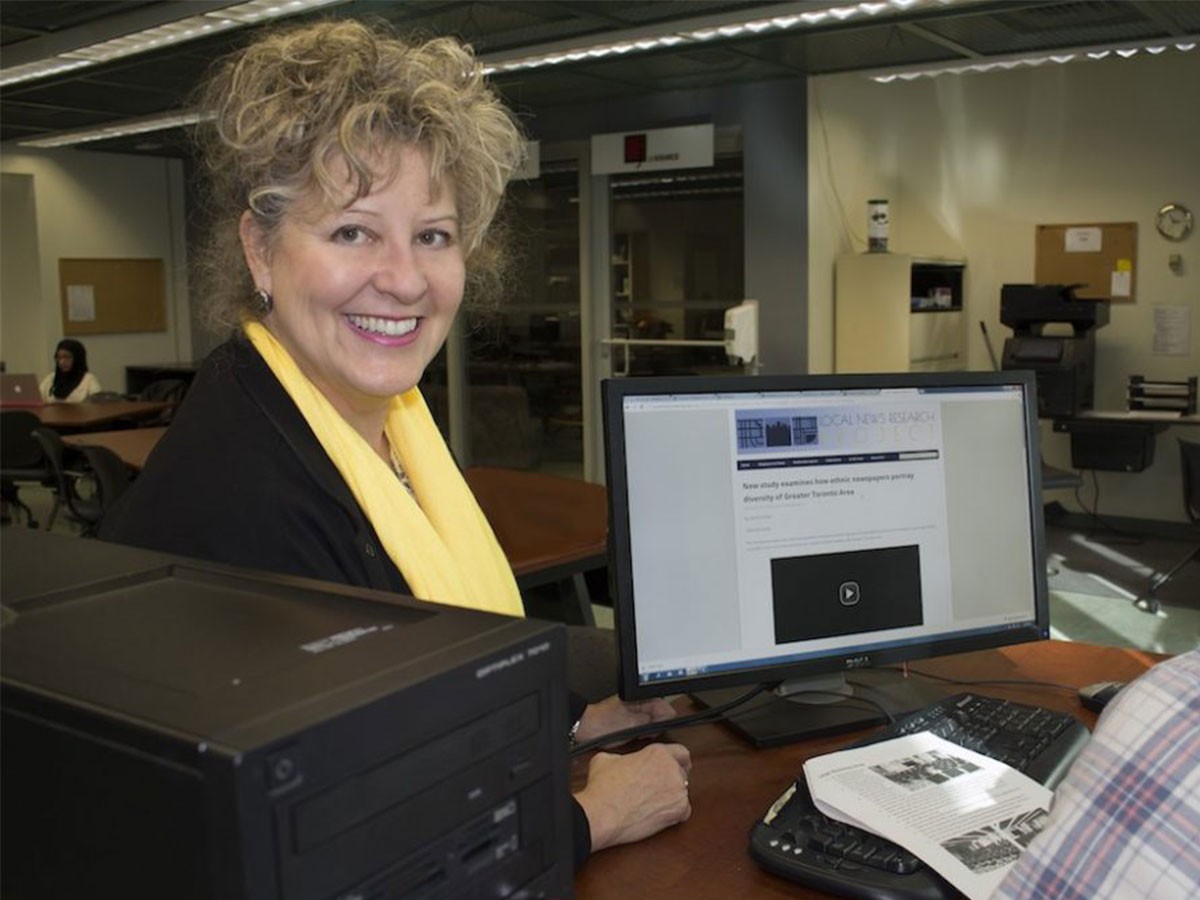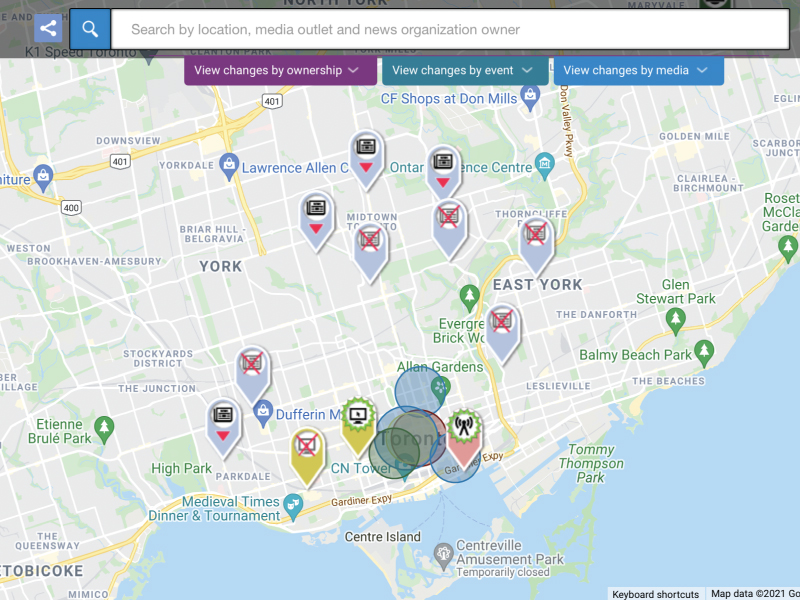How this Journalism professor is raising awareness about local news poverty
April Lindgren, a professor in the School of Journalism and Velma Rogers Research Chair, is taking up the cause of our precarious media landscape and undertaking critical research on the need for local news in meeting the information needs of communities. In an effort to shed light on the power and critical importance of local news, she leads The Local News Research Project (external link, opens in new window) : an initiative that combines content analysis and digital mapping to explore issues related to local news.

School of Journalism professor April Lindgren leads The Local News Research Project
We need local journalism because if we don't have independent, verified, timely journalism produced with transparent methods, there's a void there and into the void is misinformation, rumours and mischief that makes everything more difficult
According to the website, the project’s research examines local coverage and news poverty in Canadian communities at a time when print and broadcast outlets are scaling back, consolidating or closing, and many online news sites are struggling to stay afloat. Since 2008, 447 local news outlets have closed their doors across Canada. Since March 2020, 63 news outlets have shut down operations for good due to the pandemic, a worrisome trend with implications for our democracy.
Local journalism plays a critical role in society, a function not broadly recognized. Without journalism, it’s difficult to separate truth from misinformation and makes it challenging for citizens to be actively involved with local affairs.
“We need local journalism because if we don't have independent, verified, timely journalism produced with transparent methods, there's a void there and into the void is misinformation, rumours and mischief that makes everything more difficult,” Lindgren explained. “Everything feels like a rumour and people don't know what to believe or they believe information that's blatantly untrue.”
A closer look at local newsrooms
An important part of the project, the Local News Map (external link, opens in new window) , aims to track the activity and service status of newsrooms across Canada through crowd-sourcing, such as if the news outlet is open, closed or has a decrease in service. The digital tool allows users to type in their location and see all the newspapers, broadcast outlets and online news sites within that space.

The Local News Map, an initiative The Local News Research Project
The map also shows the status of the publication, with many of the publications labelled ‘closed,’ reflecting the numerous newsroom shutdowns in recent years.
Spurred by the constant lamenting of closures for many years, Lindgren wanted to experiment with a solution tackling newsroom poverty. She started by launching the Local News Data Hub, with the goal of using data to add an extra quantitative edge to stories. The resource was also developed to provide support and training for young journalists in building their skills in data journalism and bridging the gap between the data that’s available and the journalist's ability to analyze it.
“Over time, I'm hoping at some point, [the Local News Data Hub] will be able to actually be a resource for newsrooms as well. So if they have some data, and they're not quite sure how to draw out the significance for the public, ideally, I'd like to be able to help them with their story.”

The Local News Research Project (external link) is an initiative that combines content analysis and digital mapping to explore issues related to local news
The future of local news
Lindgren was recently a guest on The Forefront (opens in new window) , a podcast that tells stories about the innovation, research, and collaborations coming out of the university created by the Alumni Relations team. In a recent episode, Lindgren discussed The Local News Research Project and her perspective on the future of local news and journalism.
“I'd say I'm semi-optimistic, I'm not completely pessimistic. I think it's going to be a challenging time. But there are reasons to be optimistic,” she said on The Forefront. “As I said, I think the emergence of a stronger culture of nonprofit news, I think, is a good thing. I think the collaborations are great, and I think that newsrooms are continuing to innovate.”
The Local News Research Project has also highlighted innovations in the industry, including new business models for journalism, such as nonprofit publications, collaborations across organizations and crowdfunding.
Listen to the full episode here (opens in new window) and keep up with Lindgren’s work on The Local News Research Project’s website (external link, opens in new window) .
The Creative School at Ryerson University
The Creative School is a dynamic faculty that is making a difference in new, unexplored ways. Made up of Canada’s top professional schools and transdisciplinary hubs in media, communication, design and cultural industries, The Creative School offers students an unparalleled global experience in the heart of downtown Toronto.